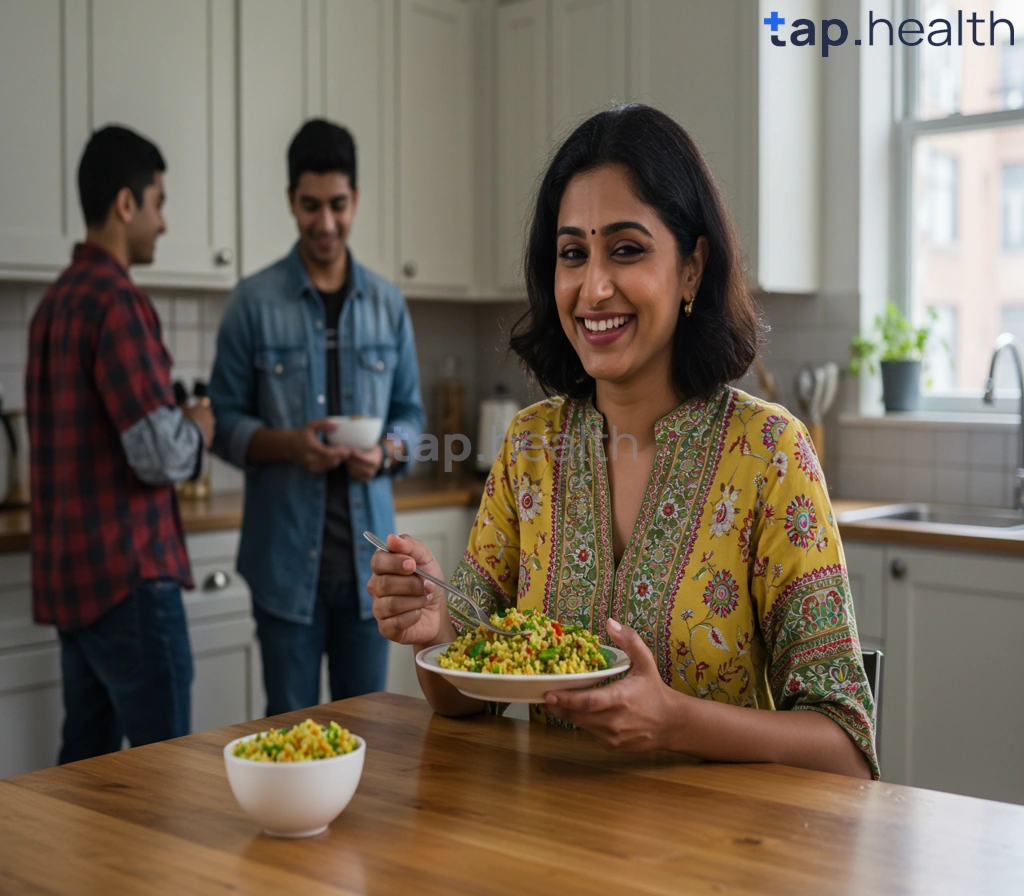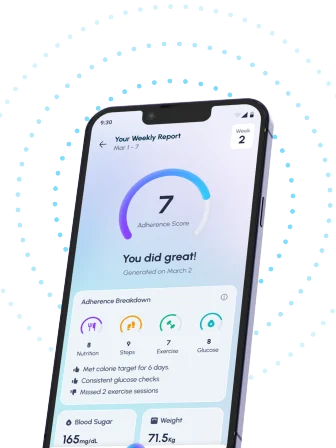Table of Contents
- Understanding Type 2 Diabetes Symptoms
- Type 2 Diabetes: Causes and Risk Factors
- Preventing Type 2 Diabetes: A Comprehensive Guide
- Is It Type 2 Diabetes? Early Signs and Diagnosis
- Managing Type 2 Diabetes: Lifestyle and Treatment
- Frequently Asked Questions
Living with or around someone with Type 2 diabetes can be challenging, but understanding the condition is the first step towards effective management and a healthier life. This blog post focuses on Understanding Type 2 Diabetes: Symptoms, Causes, and Prevention, providing you with clear, concise information to empower you to make informed decisions. We’ll explore the telltale signs of Type 2 diabetes, delve into the underlying factors contributing to its development, and most importantly, discuss practical strategies for prevention and control. Don’t let diabetes control you – let’s work together to understand it better. Let’s get started!
Understanding Type 2 Diabetes Symptoms
Recognizing the Signs in Indian and Tropical Climates
Type 2 diabetes often sneaks up on you, making early detection vital. Think of it like a slow burn – the symptoms might seem minor at first. In hot, humid climates like those across India and other tropical regions, increased thirst and frequent urination, common diabetes indicators, can easily be mistaken for simple dehydration. You might find yourself constantly reaching for a drink, even more so than usual in the heat. This is where awareness becomes key – don’t dismiss it as just the weather. Another red flag? Unexplained weight loss, even if your appetite remains normal or even increases. This can be particularly confusing, given the rich and varied diets common in the region.
Impact of Lifestyle and Diet
Persistent fatigue, feeling constantly drained, is another telltale sign. Slow-healing sores also raise a warning flag. The relentless heat and humidity can worsen these symptoms, sometimes masking the underlying diabetes. Blurred vision is another often-overlooked symptom; it can be especially tricky to pinpoint if you already have pre-existing eye issues. Early diagnosis is crucial to prevent serious complications down the line.
Taking Action: Seeking Medical Advice
The sheer number of people living with diabetes globally highlights the importance of proactive healthcare. If you’re experiencing any of these symptoms, especially if you have a family history of diabetes or have lifestyle factors that put you at increased risk, please see your doctor. Don’t delay! Early detection means timely treatment and management, helping you avoid long-term health problems. A simple blood test can often provide clarity.
Learn more about diabetes statistics.
For a deeper dive into Type 2 diabetes, including symptoms, causes, and treatments, check out this comprehensive guide: Type 2 Diabetes: Symptoms, Causes and Treatment – Tap Health.
Type 2 Diabetes: Causes and Risk Factors
Understanding the Roots of Type 2 Diabetes in India and Tropical Countries
Type 2 diabetes, where your body struggles to use insulin effectively, is becoming increasingly common in India and other tropical regions. It’s not just about genes, though – lifestyle plays a huge role. Think about the delicious, but often carb-heavy, meals common in many areas. Lots of refined carbohydrates and processed foods can really tip the scales. And if you add a lack of regular exercise into the mix, you’ve got a recipe for weight gain and insulin resistance – a major contributor to type 2 diabetes.
Genetic Predisposition and Environmental Factors
While family history increases your risk – meaning, if your parents or grandparents have it, you’re more likely to develop it – the good news is that up to 80% of type 2 diabetes cases could be delayed or even prevented through lifestyle changes! Source That’s a powerful statement about the importance of prevention. Other factors that increase risk include age (it becomes more common as we get older), obesity, and certain health conditions.
Lifestyle Choices and Prevention
In India and many tropical countries, specific dietary habits and the environment influence diabetes risk. Prioritizing a diet rich in fruits, vegetables, and whole grains is key. Think vibrant plates bursting with colorful veggies and healthy whole grains! Add regular exercise to the mix, and you’re significantly lowering your risk. Managing stress, particularly important in our fast-paced lives, is also crucial for overall well-being and helps in preventing diabetes. Remember, traditional cooking methods, often focused on fresh ingredients, can be fantastic tools in building a diabetes-preventing lifestyle.
Taking Control of Your Health
Regular check-ups are essential, especially considering the higher prevalence of type 2 diabetes in these regions. But even small lifestyle changes can make a big difference. Think about incorporating more walking into your day, choosing healthier snacks (a handful of almonds instead of a sugary treat), and paying attention to your portion sizes. Ultimately, a healthier lifestyle isn’t just about avoiding disease; it’s about feeling your best and living a longer, more vibrant life.
Preventing Type 2 Diabetes: A Comprehensive Guide
Understanding Your Risk in India and Tropical Countries
Type 2 diabetes is a serious concern, especially in India and other tropical regions. A staggering 90% of all diabetes cases in India are Type 2, as shown in this study: Impact of Lifestyle Factors on Type 2 Diabetes in India. That’s a wake-up call! Why so prevalent here? It’s a complex mix of things – genetics certainly plays a role, but our diets and lifestyles are major players. Think of it like this: our traditional foods, while delicious, can sometimes be higher in sugar and refined carbohydrates than what’s ideal for long-term health.
Lifestyle Changes for Prevention
The good news? We can significantly lower our risk. It all starts with making small, sustainable changes. Picture this: swapping that sugary mango lassi for a refreshing glass of water with lemon and a handful of almonds. Or trading fried snacks for a vibrant lentil soup packed with veggies. Regular exercise, even a brisk 30-minute walk most days, is also key – imagine it as your daily dose of happy hormones and improved energy. Stress management techniques like yoga and meditation – deeply rooted in Indian culture – are fantastic for blood sugar control, helping keep things balanced. If you’re already managing diabetes, check out our guide on simple lifestyle changes: 5 Easy Lifestyle Changes to Manage Type 2 Diabetes.
Targeted Prevention Strategies
If diabetes runs in your family, or you’re showing early signs (like higher-than-normal blood sugar), proactive steps are crucial. Regular blood sugar checks are a must. Mindful eating – really paying attention to what and how much you eat – helps with weight management. And staying active consistently is vital. Don’t hesitate to talk to your doctor; they can personalize a plan for you, including screenings to catch potential issues early. Regular check-ups are your best friend.
Taking Control of Your Future
Making these simple shifts and staying connected with your healthcare provider can make a huge difference. Prevention truly is the best medicine, especially given the high rates in our region. Start small, celebrate your progress, and remember: taking charge of your health today is an investment in a healthier tomorrow.
Is It Type 2 Diabetes? Early Signs and Diagnosis
Recognizing the Warning Signs
Type 2 diabetes is increasingly common, especially in India and other tropical regions, often creeping up on people without much fanfare. Many live with symptoms for months—even years—before getting a diagnosis. Early detection is key to preventing serious long-term problems.
Think about it: Are you constantly thirsty, needing to pee more frequently than usual? Unexplained weight loss, feeling ravenous even after meals, and persistent fatigue are other red flags. Blurry vision? Sores that heal super slowly? These could also point to type 2 diabetes. A crucial underlying factor in over 80% of cases is insulin resistance.
Want to understand how this differs from type 1 diabetes? Check out this helpful resource: Difference between Type 1 and Type 2 Diabetes: Symptoms and Causes.
Seeking Professional Help
If you’re noticing several of these symptoms, especially if diabetes runs in your family or you’re carrying extra weight, it’s time to see your doctor. A simple blood test can check your blood sugar levels and give you a clear answer. Early diagnosis is incredibly important; it allows for early intervention, slowing the disease’s progression and reducing the risk of complications. Lifestyle plays a huge role, particularly in India and other tropical areas.
Regional Considerations for Prevention
Many diets in tropical countries, including India, are high in carbs and refined sugars—which contribute to weight gain and that nasty insulin resistance. Focusing on a balanced diet—lots of fresh fruits, vegetables, and whole grains—is vital. Regular exercise, even a brisk 30-minute walk most days, can significantly improve your body’s response to insulin. Remember, steady, consistent lifestyle changes are far more effective than crash diets or intense, unsustainable workout plans. Talk to your doctor or a registered dietitian for personalized advice.
Managing Type 2 Diabetes: Lifestyle and Treatment
Understanding the Challenges in India and Tropical Countries
Type 2 diabetes significantly impacts India and other tropical regions. Globally, it accounts for a staggering 61% of all diabetes cases in adults aged 20-64 (https://diabetesatlas.org/data/en/world/). The intense heat, traditional diets often high in carbohydrates, and sometimes limited access to quality healthcare create a challenging environment. Effective diabetes management in these regions requires a holistic approach, and the challenges only increase with age.
For more on the specific issues of aging and diabetes, check out our blog: Managing Diabetes as You Age: Challenges and Solutions.
Lifestyle Modifications for Better Management
Regular physical activity is crucial – consider brisk daily walks, yoga, or any enjoyable and sustainable activity. This improves insulin sensitivity. Diet is equally important: emphasize fresh fruits, vegetables, and whole grains. Reduce processed foods and sugary drinks. Portion control and mindful eating significantly impact management.
Treatment Strategies and Access to Care
While medication is essential for many, lifestyle changes form the foundation of successful management. Regular check-ups are vital for monitoring blood sugar and adjusting treatment plans. However, access to affordable healthcare and diabetes education remains a significant barrier in many areas. Strong family support and community initiatives can significantly improve adherence to treatment plans and promote healthier lifestyles.
Actionable Steps for Long-Term Well-being
- Monitor: Track your blood glucose regularly and discuss the results with your doctor.
- Move: Find enjoyable physical activities that fit your culture and lifestyle.
- Connect: Build a support network – friends, family, or support groups.
- Advocate: Speak up for better access to healthcare and diabetes education in your community.
By taking these steps, you are not just managing diabetes – you’re actively building a healthier, happier life.
Frequently Asked Questions on Type 2 Diabetes
Q1. What are the common symptoms of Type 2 diabetes, especially in hot and humid climates?
Common symptoms include increased thirst and frequent urination (which can be mistaken for dehydration in hot climates), unexplained weight loss, persistent fatigue, slow-healing sores, and blurred vision. It’s crucial to note that these symptoms might be subtle at first.
Q2. What are the main causes and risk factors for Type 2 diabetes in India and tropical regions?
Type 2 diabetes is linked to lifestyle factors such as a diet high in refined carbohydrates and processed foods, lack of regular exercise, obesity, and family history. While genetics play a role, up to 80% of cases could be prevented through lifestyle changes. Age and certain health conditions also increase risk.
Q3. How can I prevent or reduce my risk of developing Type 2 diabetes?
Focus on lifestyle changes such as adopting a balanced diet rich in fruits, vegetables, and whole grains; incorporating regular physical activity (e.g., a 30-minute brisk walk most days); managing stress through techniques like yoga or meditation; and undergoing regular check-ups with your doctor, particularly if you have a family history of diabetes.
Q4. What are the early signs of Type 2 diabetes, and how is it diagnosed?
Early signs include increased thirst, frequent urination, unexplained weight loss, persistent fatigue, slow-healing sores, and blurred vision. If you experience several of these, especially with a family history or excess weight, consult your doctor. A simple blood test can check your blood sugar levels for diagnosis.
Q5. How is Type 2 diabetes managed through lifestyle and treatment, particularly in resource-constrained settings?
Management involves lifestyle modifications like regular physical activity, a balanced diet, and portion control. Medication may also be necessary. Regular check-ups are vital. Addressing challenges related to healthcare access and affordability requires community initiatives, strong family support, and increased diabetes education.




